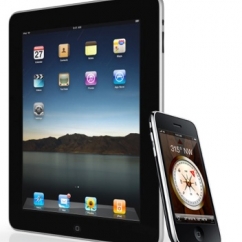Articles and News
Five Luxury Trends That Defined 2015 And 10 That Will Shape 2016 December 30, 2015 (0 comments)

New York, NY—2015 was a transformative year for the luxury sector, making the question of what’s ahead in 2016 even more urgent. The Luxury Society offers its take on luxury during 2015 and asked a panel of experts what’s in store for 2016. Here is a synopsis of both. For more detail on each, click the highlighted links for full descriptions of all the trends.
The top five trends that defined global luxury in 2015 include ongoing shifts from traditional to digital media, Boomers to Millennials, and the real power going from the brand to the consumer:
1. Chinese luxury consumers. Despite major hiccups currently occurring in the Chinese market, Chinese consumers are top consumers of luxury and are forecast to spend US $17 billion on luxury in 2016—a 9% increase over 2015.
2. Internet and mobile. With 75% of all luxury shoppers owning a smart phone and about half owning a tablet device, 75% of all luxury sales are influenced by digital. By 2025, that’s likely to be 100%. Online luxury sales grew 50% between 2013 and 2014 and in 2015 accounted for 6% of the total luxury market. Sites like Net-A-Porter are a testament to the success of online as a viable sales channel for luxury. That figure is predicted to continually rise, reaching 18% by 2025.
3. Social media. No surprise here. But luxury consumers are far more likely to use it for research or to retweet a post than they are to post their own comments. Among Millennial consumers, brands don’t hold power, buyers do, and the best way to reach them is via their icons and influencers. Snapchat is an up-and-coming site.
4. Search. Given the importance of digital across the board, good search engine optimization (SEO) is an absolutely essential component of marketing.
5. Travel retail. With luxury consumers—especially Millennials—so focused on experiences, a key place to capture them is while they’re jetting off in search of those experiences.
How will these trends impact luxury in 2016 and going forward? The overall consensus is that the global luxury market outlook remains positive, but not without headwinds. Here are some key predictions for luxury in 2016:
1. The shift from West to East shifts back to West as China continues to stay in a holding pattern. The Chinese economy is still cooling, plus the government’s crackdown on lavish spending sent wealthy Chinese consumers abroad to shop, but a stronger U.S. dollar and U.K. pound, coupled with uncertainty over potential terror threats, may drive these consumers to destinations closer to home.
2. Tumultuous macro-economics in many emerging markets helped fuel sales of luxury jewelry, watches, and collectibles in 2015; assets that appreciate in value over time and can be liquidated if necessary.
3. Continued focus on experience-based spending rather than product-based spending, especially among Millennials, who are reaching their peak affluence years. 2016 is expected to see 6.2 million affluent Millennial households in the United States. One in four Millennials would rather spend money on an experience rather than a product (though that implies that three out of four will buy the product. But that also implies that the experience while buying the product is essential to this customer.)
4. Digital remains critical to marketing, and must be leveraged to create a unique, rather than mass, digital experience. Both virtual reality and artificial intelligence become more important in digital this year.
5. Spirituality—a terms of having a sense of meaning—and ethical considerations shift from being a burden to a driving force for marketers.
6. Mobile is it. 2015 was finally the year that mobile finally surpassed desktop and that trend only gets stronger in 2016 and beyond. Look to make an impact via the functionalities of mobile—for example, WeChat and Messenger offer the ability to book a flight or table, find a hairdresser, check your bank balance, etc., just by asking in plain English.







